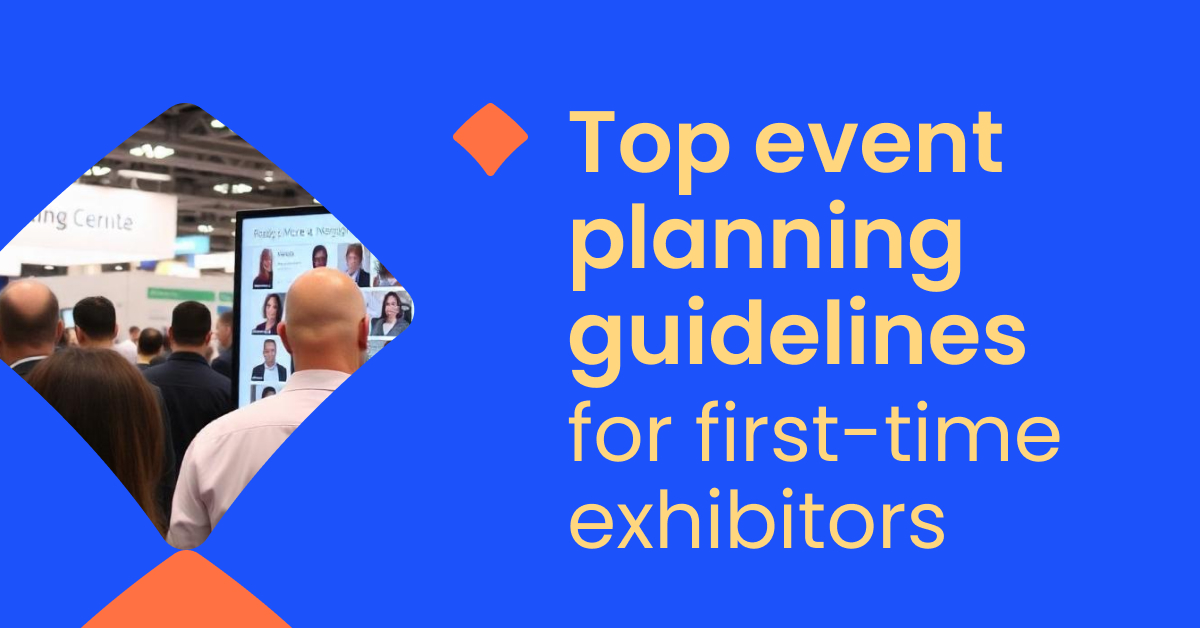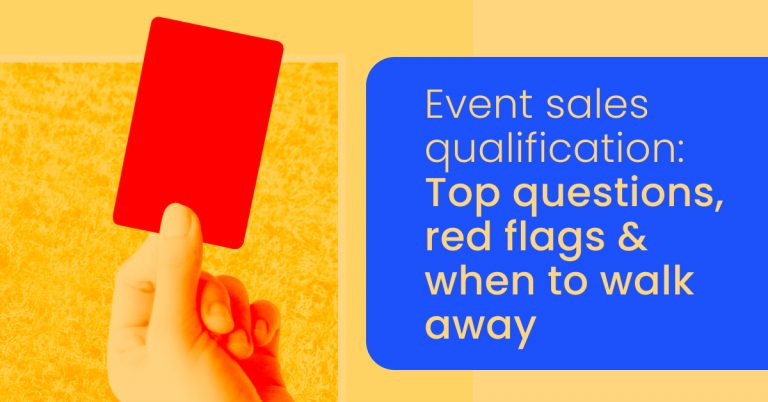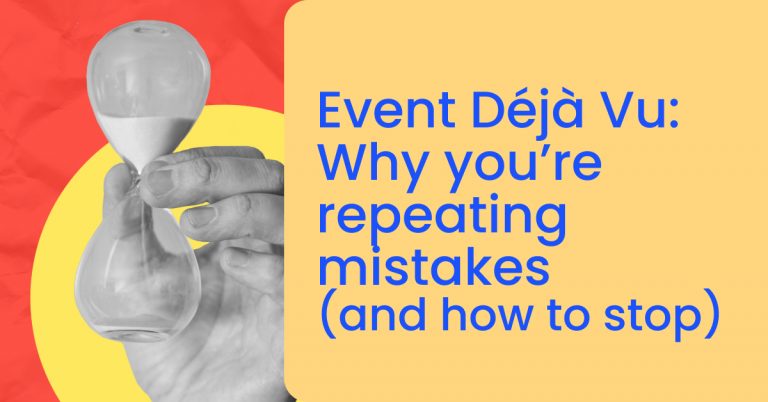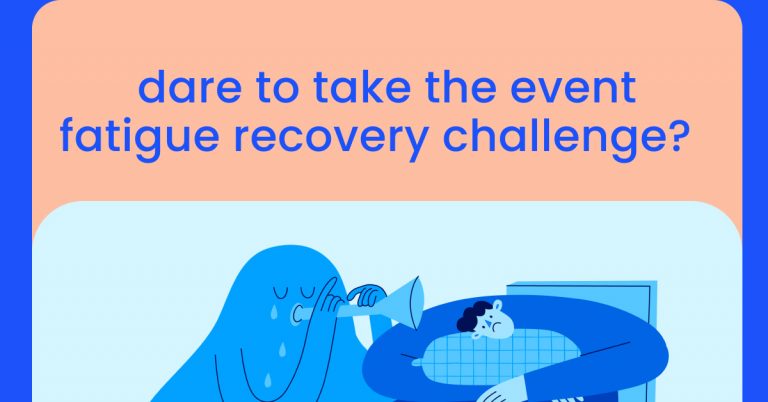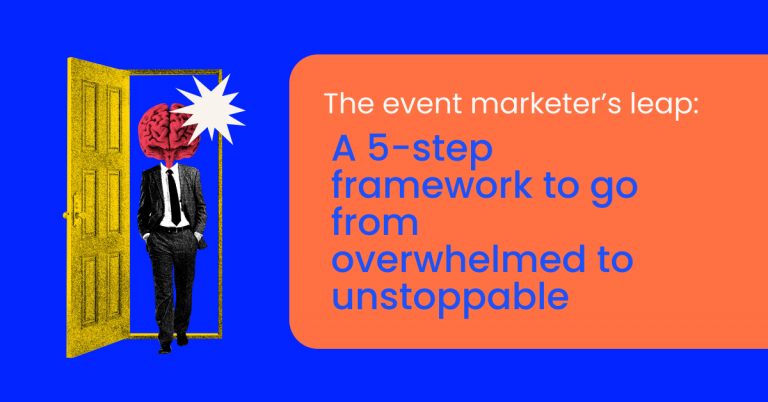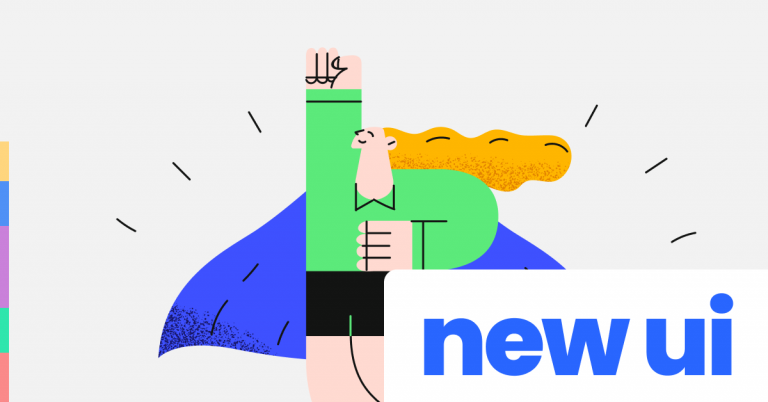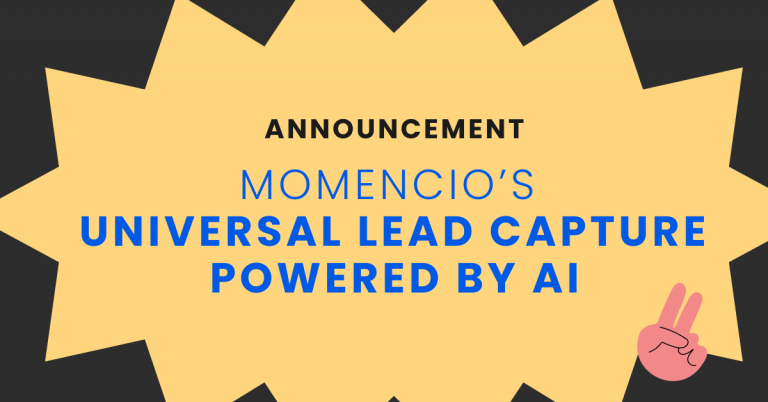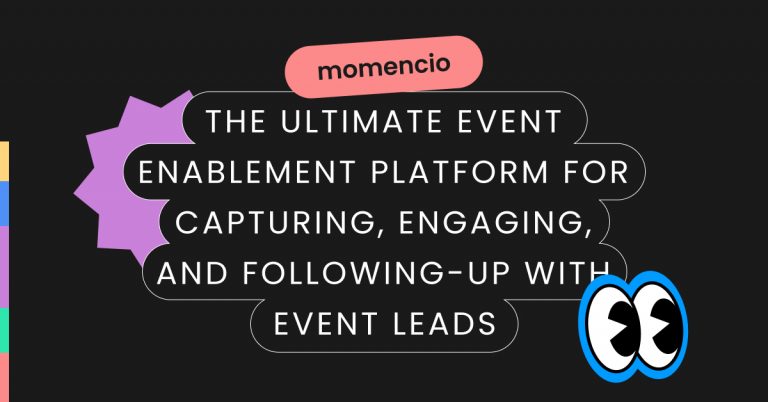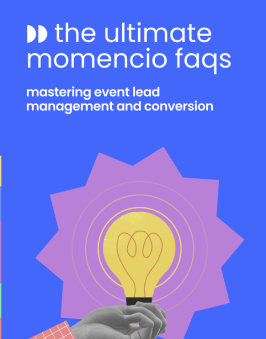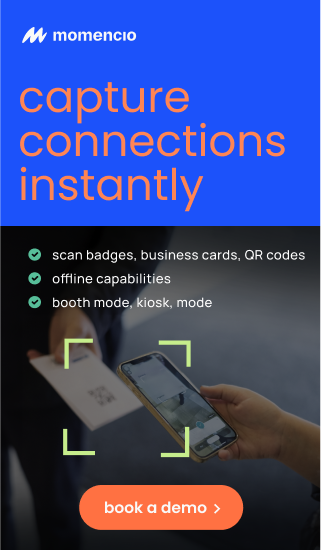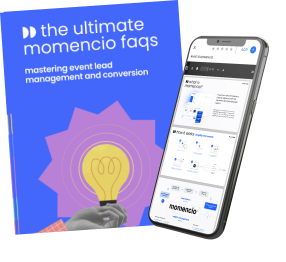Let us tell you a story about Sarah. Sarah spent 6 months preparing for her first trade show. She designed glossy brochures, rehearsed her pitch, and even bought a brand-new suit. But when the time came, she froze. Attendees walked past her booth without glancing up. Her competitor across the aisle laughed with a crowd. By day two, she was hiding behind her table, scrolling her LinkedIn feed for tips.
First-time exhibitors often confuse “showing up” with “standing out.” They treat events like checkboxes—book a booth, print banners, hope for leads. But events are not passive opportunities. They are stages. And if you want to perform, you need event planning guidelines that turn anxiety into action.
Below, we will walk you through the frameworks top exhibitors use to dominate trade shows, capture high-quality leads, and avoid Sarah’s fate. You will learn how to design magnetic booths, weaponize attendee psychology, and use tools like momencio to automate lead follow-ups before the event ends.
Let us start with the foundation.
5 event planning guidelines for first-time exhibitors
A study found that 85% of exhibitors believe in-person events drive higher-quality leads than digital campaigns. But this only holds true if you follow rules that separate professionals from amateurs.
Guideline 1: Define your “north star metric” before spending a dollar
Most exhibitors say, “We want leads.” But what kind?
- Quantity: 200 scanned badges
- Quality: 50 meetings booked with decision-makers
- Sales: $20,000 in closed deals within 30 days
Your north star dictates every decision. If your goal is quality, skip the raffle wheel and host 1:1 demos. If it is sales, train your team to qualify leads on the spot using momencio’s lead scoring.
Guideline 2: Reverse-engineer your attendee’s journey
Walk the floor as an attendee. What do they see first? Where do they linger? What makes them ignore a booth? Map their path:
- Pre-event: They research exhibitors online. Ensure your website and social profiles align with your booth messaging.
- During-event: They prioritize booths with interactive demos. Use momencio’s mobile app to replace paper handouts.
- Post-event: They expect follow-ups within 24 hours. Automate this with momencio’s CRM sync.
Guideline 3: Train your team to be hunters, not order-takers
Your staff should:
- Ask open-ended questions (“What challenges are you hoping to solve here?”).
- Scan badges instantly (no fumbling with iPads).
- Escalate hot leads to a sales rep via momencio’s real-time alerts.
Role-play objections until responses become muscle memory.
Guideline 4: Design for the 3-second rule
Attendees decide to engage with your booth in 3 seconds. Use the “3F framework”:
- Focal point: A rotating product demo or live presenter.
- Frictionless entry: No narrow aisles or cluttered tables.
- Follow-through: A clear call-to-action (“Scan to skip the line for a free consultation”).
Guideline 5: Measure everything—especially mistakes
Track:
- Cost per lead
- Dwell time at your booth
- Follow-up response rate
Use momencio’s event analytics dashboard to identify leaks in your funnel.
Did 100 people scan your QR code but only 10 open follow-up emails? Fix your messaging.
How to design a booth that stops attendees in their tracks
Let me break a myth: Expensive booths do not win. Strategic booths do.
Step 1: Borrow tactics from Apple stores
Apple’s stores are designed for discovery, not transactions. Apply this to your booth:
- Demo stations: Let attendees touch your product.
- “Genius bar”: A dedicated area for consultations.
- No pressure: Use signage like “Questions answered here” instead of “Buy now.”
Step 2: Seize attention with contrast
At a cybersecurity expo, a company placed a giant “hacked” ransom note on their booth. Attendees stopped to “solve” the puzzle—and learned about their software.
Contrast works because it disrupts patterns. Try:
- A live artist sketching attendees’ “future state” with your product.
- A trivia wheel with industry-specific questions.
Step 3: Eliminate bottlenecks
Attendees avoid booths where they might get trapped. Use open pathways and zone your space:
- Zone 1: Quick interactions (scan a QR code for a whitepaper).
- Zone 2: Mid-length (watch a 2-minute demo).
- Zone 3: Private (discuss pricing in a closed pod).
Psychology of attendee engagement: Why 92% of visitors forget your booth (and how to fix it)
Let me share a story about two booths at CES.
Booth A: A flashy LED wall, free branded stress balls, and a team handing out brochures.
Booth B: A simple setup where attendees could “hack” a mock smart home using the company’s security software.
Guess which booth had a 40-person line all day?
Studies have found that 92% of attendees cannot recall specific exhibitors 72 hours after an event. Why? Most booths blend into a sea of sameness. To beat this, you must weaponize three psychological triggers.
Trigger 1: Curiosity gaps
Humans hate unresolved questions.
- Bad: “Our software boosts productivity.”
- Good: “What if you could reclaim 11 hours per employee every month?”
At a healthcare expo, a medtech company displayed an empty IV bag labeled “time wasted on manual data entry.” Attendees stopped to ask, “What’s that about?”—leading to a demo of their automation tool.
Trigger 2: Social proof dominance
Attendees flock to crowds. Create the illusion of demand:
- Use velvet ropes to segment your booth (even if unnecessary).
- Train staff to cluster toward the front, laughing and chatting.
- Display a live leaderboard of companies who signed up for trials.
Pro tip: Use momencio’s real-time activity stream to gain tactical advantage with real-time visibility of lead engagement.
Trigger 3: Instant gratification
Offer value before asking for anything:
- “Scan for instant access to our $500 toolkit” (vs. “Scan to join our newsletter”).
- Host 5-minute “power sessions” on niche industry pain points.
At a food expo, a spice brand let attendees create custom blends to take home. The catch? They had to watch a 2-minute video on sourcing ethics first.
“But what if no one visits my booth?” – answering 3 common fears
Fear 1: “Attendees will ignore us.”
Solution: Ambush the aisle.
Station a team member 5 feet outside your booth with a tablet running momencio. Their job? Ask passersby one question:
“Quick poll: What’s your #1 challenge with [industry pain point]?”
Display live results on your booth screen. Curiosity will pull them in.
Fear 2: “Our competitors will steal our thunder.”
Solution: Turn rivals into referrers.
At a fintech conference, Company X set up a photo booth with a sign: “Take a selfie with the second-best payment API!” Competitors laughed, attendees lined up for the joke, and Company X captured 300+ leads.
Fear 3: “We’ll misqualify leads.”
Solution: Automate qualification.
With momencio’s lead scoring, set criteria like:
- +10 points: Attendee visited booth twice.
- +20 points: They asked for pricing.
- -5 points: Spent under 30 seconds at the demo.
Only follow up with leads scoring above 50.
Post-event strategies: How to turn 200 leads into $100,000 (actionable checklist)
Checklist item 1: Send a “while you were away” email within 2 hours
Subject line: “Your [event name] takeaways (plus the demo you missed)”
Include:
- A personalized video recap of their booth visit.
- Links to requested resources.
- A calendar booking link.
Checklist item 2: Assign lead tiers within 24 hours
- Tier 1 (Hot): Contact within 4 hours.
- Tier 2 (Warm): Send a case study + “Can we schedule a 10-minute chat?”
- Tier 3 (Cold): Nurture via automated educational emails.
Checklist item 3: Host a “deal accelerator” webinar 5 days post-event
Invite all leads to a 30-minute session:
- 10 minutes: Industry insights from the event.
- 15 minutes: Live Q&A.
- 5 minutes: Limited time offer (“Sign up today and get 3 months free”).
You can prepare for the webinar based on the collective learnings gathered from the lead interactions on the custom landing pages sent after the initial booth interaction at the event.
Use momencio’s personalized presentations to showcase interactive content.
Checklist item 4: Audit your funnel leaks
Compare:
- Booth visitors vs. leads scanned.
- Email opens vs. replies.
- Demos booked vs. deals closed.
If you scanned 500 badges but only 100 opened emails, your booth team oversold or under-delivered.
The unstoppable power of in-person events
Sarah (remember her?) returned to the same trade show a year later—but this time things were different.
When she returned to the trade show floor a year later, she ditched gimmicks and embraced human connection. She stationed staff at the aisle with momencio-powered tablets to scan badges and business cards, and ask, “What’s one thing you wish vendors understood about your needs?” She hosted live “challenge solving” sessions at her booth, where attendees crowdsourced answers to real industry problems. And within 2 hours of the event closing, her team sent personalized follow-ups via momencio—linking each lead to a video summary of their conversation.
Result? A 214% increase in qualified leads and 3 enterprise deals closed within 10 days.
In-person events are not dying. They are evolving.
Tools like momencio exist to amplify—not replace—these human moments. They automate the tedious (scanning badges, logging lead data) so you can focus on the irreplaceable:
- Reading a prospect’s hesitation during a demo and pivoting your pitch.
- Laughing with an attendee over coffee, turning a lead into a collaborator.
- Spotting a competitor’s booth visitor looking frustrated and swooping in.
The future belongs to exhibitors who weaponize analog humanity with digital precision.
Conclusion
The goal is not perfection. It is progress.
Track what works. Kill what does not. Double down on tactics that drive your north star metric. And remember, even the most seasoned exhibitors started exactly where you are now: overwhelmed, underprepared, and one strategic partnership away from a breakthrough.
Want to skip the trial-and-error phase? Book a free demo to explore how momencio automates lead capture, follow-ups, and ROI tracking—so you can focus on what actually matters: building relationships that outlast the event floor.
FAQs
- What are the most overlooked event planning guidelines for new exhibitors?
- New exhibitors often neglect attendee psychology and post-event follow-ups. Instead of pushing products, focus on sparking curiosity (e.g., “What’s the #1 mistake 80% of your peers make?”) and use tools like momencio’s CRM sync to automate lead nurturing. Without prompt, personalized follow-ups, even hot leads go cold—a leak easily fixed by integrating event planning guidelines with sales activation workflows.
- How much should a first-time exhibitor budget for a trade show?
- Allocate 60% of your budget to engagement (staff training, interactive demos), 30% to booth design (contrast over cost), and 10% to contingencies. Prioritize ROI-driving tools like momencio’s digital business cards to replace expensive print materials, ensuring every dollar ties back to measurable lead generation.
- How do I measure event success beyond lead quantity?
- Track cost per lead, lead-to-sale conversion rates, and brand lift (social mentions, post-event traffic). Tools like momencio’s ROI calculator help attribute closed deals directly to your event efforts, turning vague “success” into actionable event planning guidelines for future shows.
- What hybrid event mistakes do first-timers make?
- Failing to engage virtual attendees equally. Stream live booth demos with polls and use platforms like momencio to unify in-person badge scans with virtual chat leads. Hybrid events demand parallel strategies—ignoring one audience undermines even the strongest event planning guidelines.
- How soon should I follow up with leads post-event?
- Within 2 hours. Attendees forget 92% of exhibitors within 72 hours, so automate personalized emails (“Here’s the demo you missed”) using momencio’s workflows. Speed is a competitive advantage—delay follow-ups, and competitors will swoop in, no matter how flawless your event planning guidelines.
